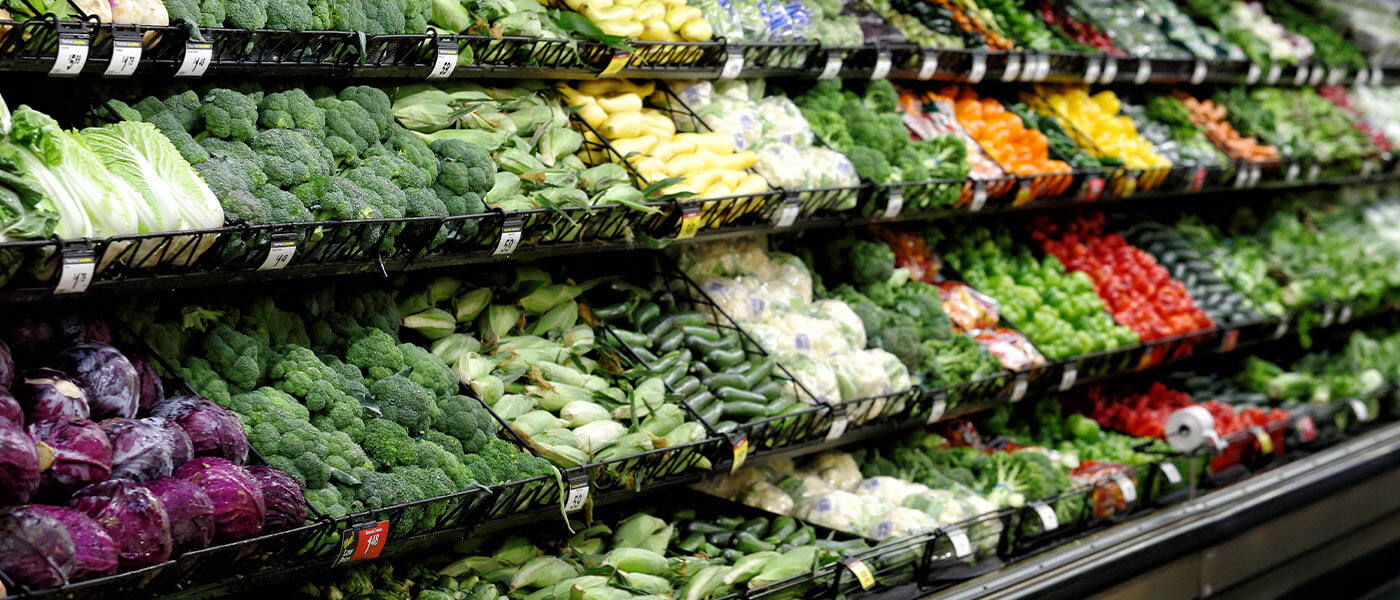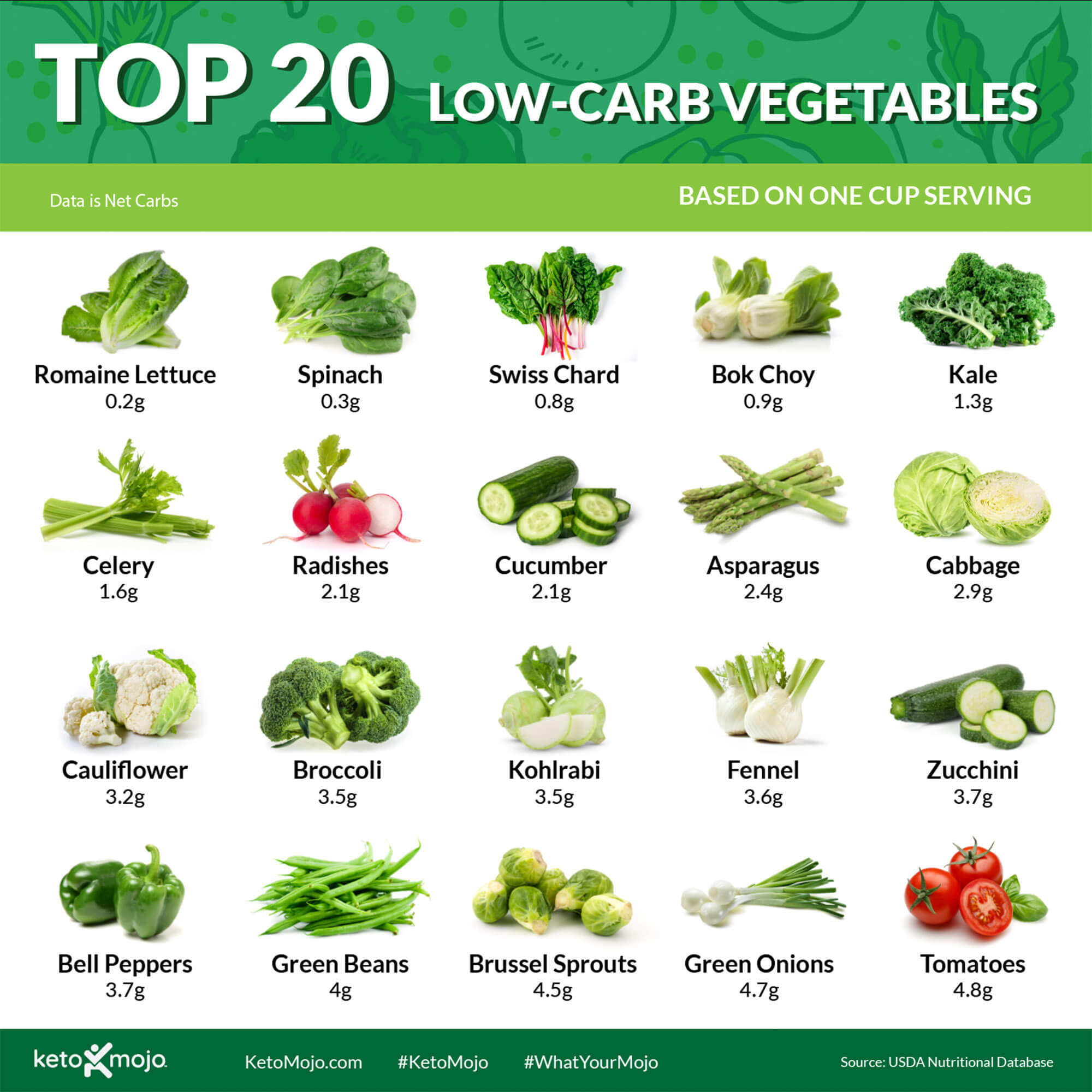When most people think of the keto diet, images of burgers, butter, and bacon come to mind. However, the truth is, vegetables should make up a good portion of the food on your plate in a balanced keto meal plan.
Vegetables are rich sources of vitamins, minerals, fiber, and phytonutrients that provide nutrients to fuel your cells. The problem is “vegetables” is an expansive umbrella term. While many veggies fit perfectly into a keto diet, some should only be consumed in moderation or avoided altogether for one important reason: they are high in carbohydrates.
Carbohydrates are highly restricted on a keto diet. Eating too many of them, even in vegetable form, can kick you out of ketosis. For this reason, it’s imperative that you choose vegetables that are low-carb.
For instance, although sweet potatoes are loaded with vitamin A, vitamin C, and fiber, they also contain 26 grams of carbs in a 1/4 cup serving. The same goes for most other root vegetables (Hello, all other potatoes, beets, and carrots.)
On the other hand, three cups of spinach, which is rich in vitamin K and folic acid, has just three grams of carbs.
If you want to eat for optimum flavor and nutrition on a keto diet and enjoy the variety of healthy vegetables available to you, it’s good to get familiar with the very best keto-friendly vegetables and the benefits they offer.
The Top 20 Low-Carb Vegetables
Want to know what to buy and have on hand in your refrigerator’s vegetable bin? Check out the following 20 vegetables. Listed from lowest to highest in net carbs, they’re as delicious as they are nutritious.
#1 Romaine Lettuce
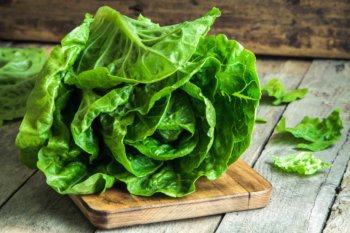
Similar to cucumbers, lettuce is made up of mostly water. However, this doesn’t make it any less nutrient-dense. In fact, one and a half cups of romaine lettuce contains over 30 percent of your daily folate needs and about 10 percent of your daily potassium needs.
While most people use lettuce as a base for a salad, you can also use a large piece of romaine as a sandwich wrap, or grill your lettuce for a grilled caesar salad.
Keto Recipes Featuring Romaine Lettuce
#2 Spinach (raw)
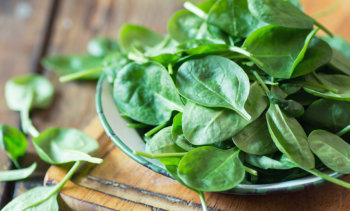
Spinach is rich in B vitamins, especially folate. In fact, just three cups of raw spinach takes care of nearly 50 percent of your daily folate needs. As an essential aspect of many coenzymes in your body, folate plays a role in growth, development, and the synthesis of DNA.
In addition to folate, spinach contains other crucial B vitamins including thiamine(B1), riboflavin(B2), niacin(B3), pyridoxine (B6).
Spinach works great in a number of dishes; you can stir-fry it with peppers and onions, eat it raw as a base for a salad, or sneak some into your daily shake.
Keto Recipes Featuring Spinach
#3 Swiss Chard
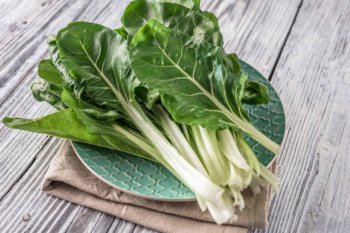
Swiss chard is another leafy green vegetable that’s packed with nutrients. Aside from an array of vitamins and minerals, swiss chard also happens to be a wonderful source of kaempferol, a phytonutrient with potent antioxidant activity.
Among the benefits of kaempferol is its potential to protect against cancer by inhibiting cell growth and inducing cancer cell death.
Unlike lettuce and spinach, chard is typically cooked due to its high fiber content and sturdier structure, which benefits from being softened by heat. You can use swiss chard in a stir-fry, work it into a stew, or saute it in garlic and butter.
Keto Recipes Featuring Swiss Chard
#4 Bok Choy
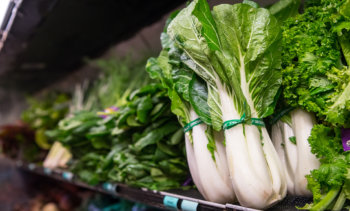
Bok choy is a fantastic source of vitamin K, a fat-soluble vitamin that’s essential for preventing blood clotting and promoting bone formation.
Although it’s more popular in Asian cuisine and not typically a staple in the Western diet, bok choy is a delicious green vegetable that’s easy to cook and to find (it’s available at most grocery stores). You can use the versatile vegetable in stir-fry or soups, or grill it with or without a marinade. The mild flavor of bok choy lends itself to a range of taste profiles, but most recipes use a combination of ginger and garlic to spice it up.
Keto Recipes Featuring Bok Choy
#5 Kale
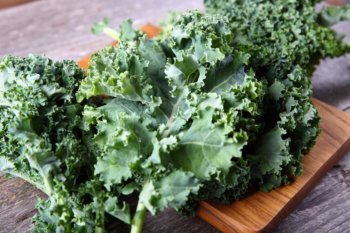
Packed with vitamins, minerals, and phytonutrients, kale is well-known in health and wellness communities as a “superfood veggie.”
Lutein and zeaxanthin are just two antioxidant compounds that kale supplies in abundance; these two antioxidants combat the harmful effects on the retina of blue light, which has been shown to lead to macular degeneration and cataracts.
Kale is a very hearty green leafy vegetable, so it’s best enjoyed cooked (sautéed, stir-fried, steamed), or massaged with salt and oil to break down its fiber before using it raw. You can also toss kale in high-quality high-heat cooking oil, sprinkle it with salt, and bake it into “kale chips.”.
Keto Recipes Featuring Kale
#6 Celery
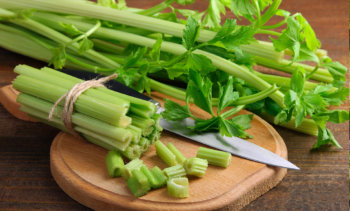
Once a lowly sidekick to buffalo chicken wings, celery is becoming highly popular in the low-carb vegetable lineup. It does have a lot going for it – refreshing, crunchy, and with clean, versatile flavor that makes it perfect for soups, smoothies, salads, and, most helpful, a crispy, edible vehicle for keto-friendly dips!
Aside from being rich in vitamins and minerals, celery is a great source of the plant compound luteolin, which has been studied for its role in reducing brain inflammation. Research suggests that luteolin could have a significant impact on neurological diseases like Alzheimer’s and Multiple Sclerosis.
Keto Recipes Featuring Celery
#7 Radish
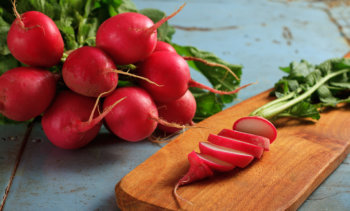
Radishes contain a bounty of antioxidants in the form of anthocyanins, which are phytonutrients that give the skin of radishes their vibrant red color. One of the benefits that anthocyanins impart is blood-sugar regulating qualities, which have been studied in people with diabetes. Although the exact mechanisms by which radishes help to control blood sugar is still up for debate, it’s likely due to their ability to enhance the rate at which glucose is taken up by your cells.
Radishes can be used a variety of ways on a low-carb diet. Slice them thinly as a beautiful and delicious topping to your salad, use them to scoop up keto dips, or even cook them and eat them like baby potatoes!
Keto Recipes Featuring Radishes
#8 Cucumber
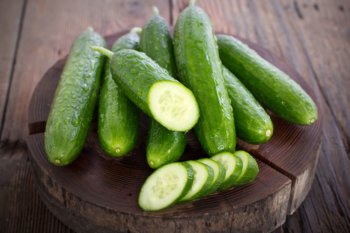
One of the benefits of eating cucumbers is that you get an extra bonus of hydration. Cucumbers are 95 percent water, which means that when you eat them you get to enjoy all the vitamins and minerals they supply, plus a boost in your water intake.
Cucumbers are also a rich source of antioxidants, specifically vitamin C and phenolic compounds, which combat the damage of oxidation in your body.
Add cucumbers to fresh salads, or slice them up and put them in your water for a touch of flavor.
Keto Recipes Featuring Cucumbers
#9 Asparagus
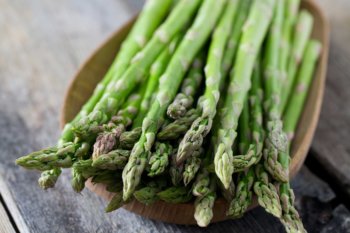
About half of the carbohydrates in asparagus come from fiber, making this green veggie an excellent choice for digestive health. The fiber in asparagus not only helps to keep you regular, but it also serves as a prebiotic – feeding the good bacteria in your digestive tract.
Asparagus is best served cooked; you can try grilling, baking, or pureeing your asparagus in a soup. And if you want to get fancy, an all-time keto favorite is asparagus wrapped in bacon.
Keto Recipes Featuring Asparagus
- Keto Sheet-Pan Salmon with Asparagus and Grainy Mustard Sauce
- Keto Pecan-Crusted Chicken with Mustard Cream Sauce & Asparagus
#10 Cabbage
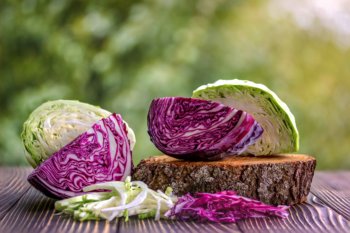
Cabbage is a cruciferous vegetable rich in the amino acid glutamine, which plays a vital role in maintaining the health and integrity of your gut lining. In fact, people with irritable bowel disease tend to have low glutamine levels, which may be a contributor to their digestive disturbance.
Cabbage is wonderfully filling, mild in flavor, and versatile. Shred it for fabulous slaws, salads, and taco toppings. Or add it to your stir-fry, soups, or stews.
Keto Recipes Featuring Cabbage
#11 Cauliflower
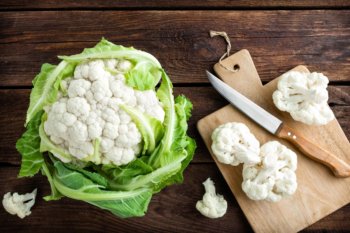
Cauliflower is a keto all-star vegetable. Along with other common cruciferous vegetables, it’s a fantastic source of sulfur-containing compounds called glucosinolates. Research shows that glucosinolates play a role in calming inflammation in your body, and may protect against cancer and heart disease due to their antioxidant activity.
Plus, it’s the base of pizza crusts, “rice,” and “mashed potatoes” we can actually eat, amazing when roasted with a simple sprinkle of olive oil and salt, and a great raw vegetable to add to any veggie platter.
Keto Recipes Featuring Cauliflower
- Keto Cheesy Cauliflower “Mashed Potato” Casserole
- Cauliflower-Zucchini Keto Latkes
- Keto Cauliflower Gratin with Crunchy Almond Topping
#12 Broccoli
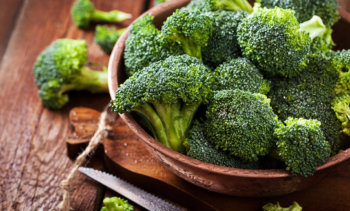
Broccoli is a rich source of vitamins, minerals, and fiber, but it also contains another health-promoting compound in abundance: sulforaphane. Sulforaphane is a sulfur-containing compound that turns on your body’s natural detoxification pathways and antioxidant defenses to optimize your liver function.
Raw, roasted, steamed, stir-fried, pureed into a soup…broccoli is delicious in any number of preparations!
Keto Recipes Featuring Broccoli
- Keto Broccoli with Cheddar Cheese Sauce
- Keto Pizza with Broccoli Rabe, Mushrooms, & Sausage
- Creamy Keto “Pasta” with Shrimp, Bacon, & Broccoli
#13 Kohlrabi
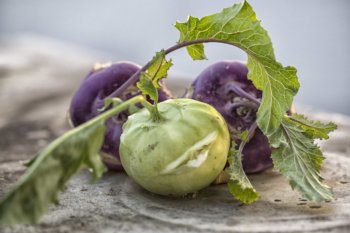
Kohlrabi is a brassica vegetable that’s exceptionally rich in vitamin C. In fact, one cup of kohlrabi contains almost 100 percent of your daily vitamin C needs, and vitamin C is an essential to your immune system and plays a vital role in skin and joint health.
Kohlrabi can be enjoyed raw as a munchy snack with dips or dressings, or you can add it to soup, roast it in the oven, or grill it.
#14 Fennel
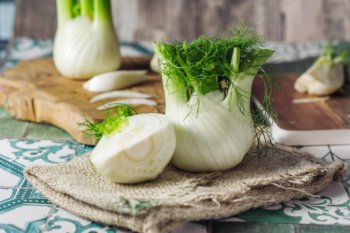
Fennel is a low-carb vegetable that’s particularly beneficial for women’s health. This slightly sweet, slightly anise-flavored stalk can promote breast milk production and also combats many symptoms associated with menopause, including sleep disturbance.
Fennel tastes great roasted with a bit of olive oil oil and sprinkled with salt and pepper or poached in cream and seasoned. You can also grill, sautée, or braise fennel to add to soups, salads, or as a side to your main dish.
Keto Recipes Featuring Fennel
- Keto Italian Cream-Braised Pork with Creamy Kale & Fennel
- Keto Butter-Basted Filet Mignon with Horseradish Cream & Zucchini Ribbons
- Keto Stuffing
#15 Zucchini
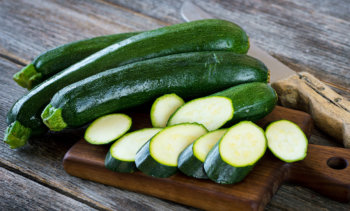
Zucchini is a very popular vegetable in the keto community thanks to the fact that once it’s “spiralized” or shaved into strips, it’s an easy, wonderful low-carb substitute for pasta. The neutral flavor of zucchini makes it an excellent vegetable to pair with rich flavors and sauces, too.
Zucchini contains a vast array of vitamins and minerals but is particularly rich in vitamin A. Just one cup of zucchini can provide 35 percent of your daily needs. Vitamin A plays a critical role in eye health and supports all your major organs, including your heart, kidneys, and lungs. In other words, bring on the zucchini!
Keto Recipes Featuring Zucchini
- Keto Crispy Baked Fish with Herb Sauce & Roasted Zucchini Sticks
- Keto Zucchini Fritters with Curry Sour Cream
- Keto Mushroom Carbonara with Zucchini Pasta
#16 Bell Peppers
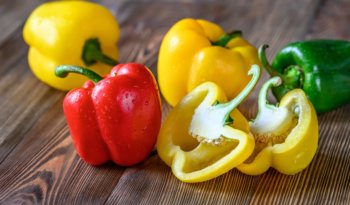
Bell peppers, especially red bell peppers, are rich in the phytonutrient beta-carotene. Beta-carotene is a potent health-promoting compound that’s been shown to increase cognitive function in the elderly, protect against diabetes, and inhibit the effects of harmful radiation from sunlight, among other things.
Bell peppers are excellent dipping vegetables. Try them with these delicious dips. You can also add them to fajita stir-frys with some onions and carne asada, or chop them up in your salad.
Keto Recipes Featuring Bell Peppers
Dip Recipes
#17 Green Beans
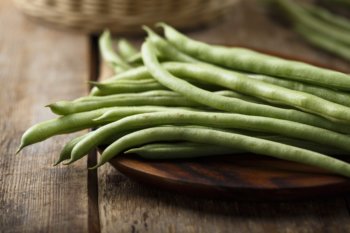
Green beans are a great source of iron; one cup provides nearly 20 percent of your daily needs. Iron is an essential mineral that’s found in every cell of your body and plays a crucial role in the production of red blood cells, brain development, and the transport of oxygen throughout your body.
Green beans can be enjoyed raw, steamed, sautéed, stir-fried, or baked into a delicious keto-friendly casserole.
Keto Recipes Featuring Green Beans
#18 Brussels Sprouts
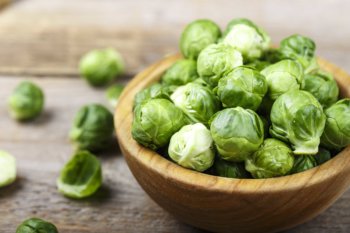
Brussels sprouts! They’re so tasty and rich in fiber, vitamin A, and vitamin C. They’re also a source of the antioxidant compound alpha-lipoic acid (ALA), which is said to support healthy blood glucose levels and possibly combat insulin resistance. For this reason, brussels sprouts are a highly recommended food for people with diabetes.
Beyond the roasted brussels sprouts craze, there are lots of other ways to enjoy them; shred and saute them, make them into a hash, or simply stick with the trends by tossing them in good-quality olive oil, sprinkling them with salt, and roasting them.
Keto Recipes Featuring Brussels Sprouts
#19 Green Onions
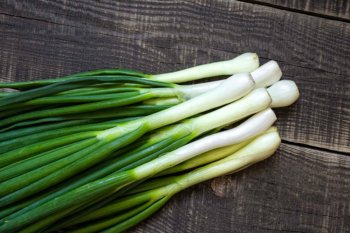
A little goes a long way with green onions. This is good news because you can use them to add onion-y flavor to your dishes instead of yellow, white, and red onions, which are generally avoided on a keto diet due to their high carb count.
Green onions belong to a group of vegetables in the allium family. Allium vegetables have been used in traditional medicine around the world as a healing plant, specifically employing their benefits for heart health.
Research shows that allium vegetables have wide ranging health benefits that include anti-carcinogenic (protect against cancer), antithrombotic (protect against blood clots), anti-arthritic (relieves pain and inflammation), and antimicrobial (kills microorganisms or stops their growth).
Incorporate green onions into your meals by sprinkling them on as a topping to salads, soups, or stews. You can also add them to a stir-fry or use them to season any of your favorite baked dishes like chicken or salmon.
Keto Recipes Featuring Green Onions
#20 Tomatoes
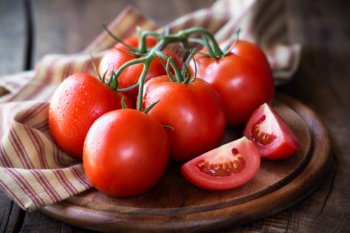
The bright red color of tomatoes comes from the phytonutrient lycopene. Lycopene is a carotenoid (fat-soluble pigment that contains carotene) that acts as an antioxidant in your body and is known to ward off chronic diseases like cancer and heart disease. Some research suggests that lycopene also plays a role in photo-protection, or protecting your skin against harmful UV rays from the sun.
Slice some tomatoes to put in your salad, stew them for a homemade low-carb marinara sauce, or add them to your eggs in the morning. There really isn’t much you can’t do with tomatoes.
Keto Recipes Featuring Tomatoes
The Final Word
It’s a misconception that you cannot eat vegetables on a ketogenic diet. In fact, vegetables are a very important part of a well-rounded keto lifestyle. The key to success lies in relying on vegetables that are high in nutrients and low in carbohydrates. Add any or all of the 20 low-carb vegetables featured in this article into your diet and avoid higher carb options like potatoes and squash and you’re on the right track. Bonus: if you cook your veggies in a healthy fat like butter, ghee, coconut oil, or olive oil. It’ll help you absorb fat-soluble nutrients in your vegetables like vitamins A, D, E, and K!
